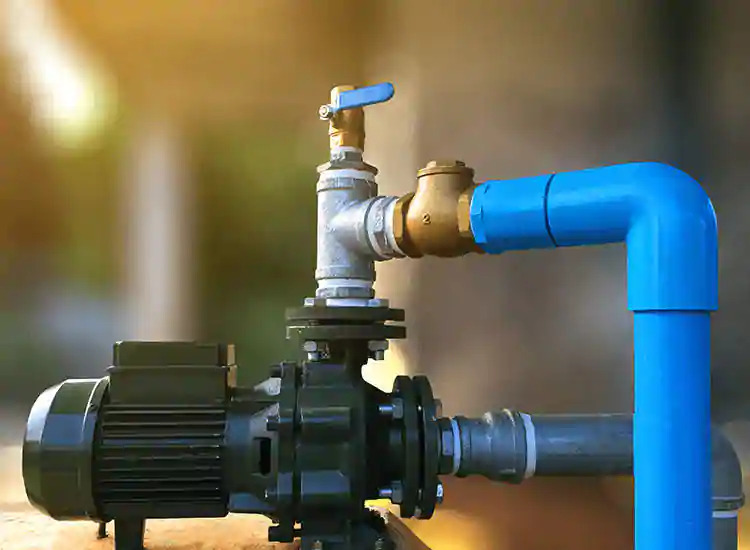Living in an urban area or town, people don’t often consider how their residents’ water is supplied daily. Small villages commonly provide a system of pipes to transport water to all of the homes in the area. All you need to know is how to turn off the water at the sink. Each home has its well and electromechanical system for drawing water from it and delivering it to the house. A water pump is an electromechanical device that raises the pressure of water to transport it from one location to another. These pumps are utilised to provide water for municipal, agricultural, industrial, and living purposes worldwide. One of the best examples of water pumps is the caravan water pump which aids in providing instant water pressure, allowing all tap channels to operate simultaneously. In sewage plants, these pumps are also utilised to transport wastewater.
The Working Mechanism Of A Water Pump.
A water pump’s operation is primarily based on the positive displacement principle and the use of kinetic energy to force water. For energising this same water pump’s motor, such pumps use AC or DC power, whereas others can be powered by other types of engines, such as gasoline or diesel.
The water pump is a small, mobile platform that one can use for various household tasks. These pumps transport large amounts of water from one location to the other. A water pump’s primary function is versatility. A good pump, carefully chosen, can be ideal for draining water from a low-lying flooded area, replenishing the pool and bathtub, and making the rounds of pesticides and fertilisers.
Because there is such a large selection of water pumps, it is essential to consider the requirements when choosing consistently strong ones.
The category of water pump that should be used in a particular region or residential area is governed by several factors, such as the water table and the consistency of the water supply.
Water pumps are typically installed above that of a well or even another water source. They work by sucking water from a well or other authority and pumping it to a tank that is designated for distribution. Atmospheric pressure plays a critical role in the success of these pumps. The pump resembles a long straw. As it suctions the water, a vacuum is created in the system, allowing air pressure to draw the excess water through it, which explains why most standard water pumps function up to a distance of 25 feet. However, it varies greatly, relying on the town’s site and air pressure.
Electricity powers water pumps. The centrifugal pump and the impeller are both powered by an electric motor included with the pump. The impeller’s job is to transport water from its source to its ultimate destination. Overall, the engine determines the amount of water pumped at a given time and speed. The impeller, on the other hand, has a role to play. It can constrict as needed to increase the speed during which water moves through the system. The impeller functions similarly to the nozzle on a garden hose and is extremely important because it determines how well a water pump operates.
Conclusion.
No matter if you’re on the street, a water pump can provide you with an instant and consistent supply of water for drinking, cleaning, and washing. The caravan water pump helps to provide instant water pressure so that all tap outlets can operate at the same time. With a manual and gravity-fed system, this water pump is suitable for obtaining the most out of your camper van, even without hassle or low water pressure.




